Grilled Fish Wrapped In Fig Leaves
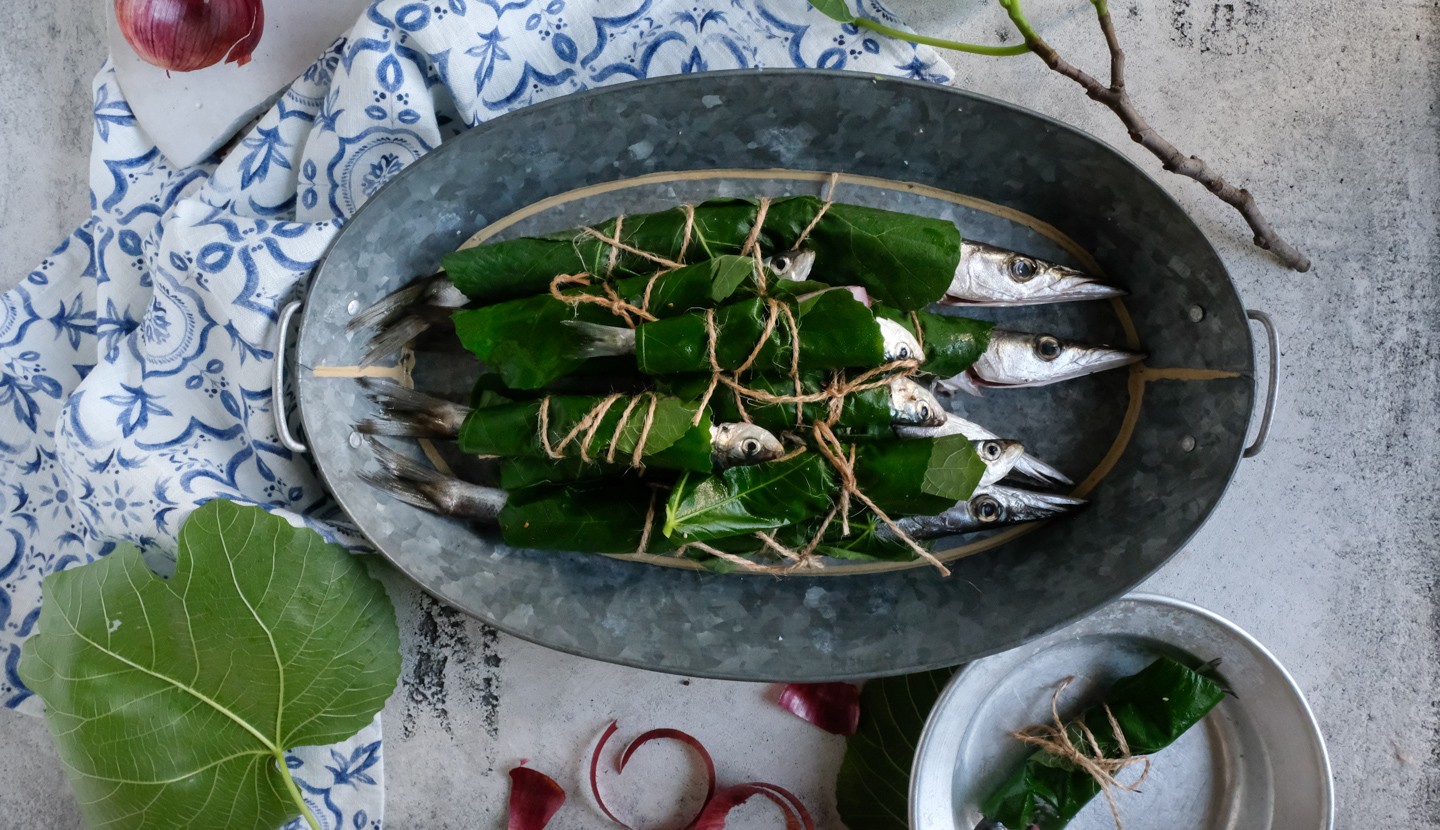
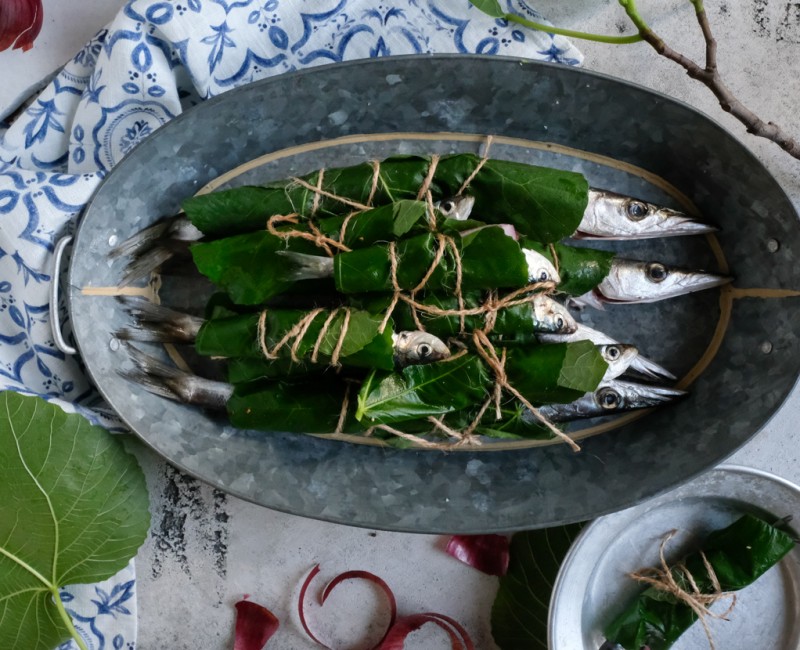
Using fig leaves was definitely not planned, the plan was to use vine leaves! Fig leaves came up totally unexpectedly when I laid eyes on the fig tree outside our house for the umpteenth time, only this time a new idea was born! This freedom to be creative and try out new things plays an important role in cooking; you can suddenly come up with new ideas, replace an ingredient, remove or add one and create something unique, one of a kind! I read somewhere that the most imaginative and original dishes were created during times of product shortage. That’s when the mind is forced to find solutions and new ideas. Thus, great things happen! Today, we’re obviously not going to make history, we’re just going to make something slightly different and original.
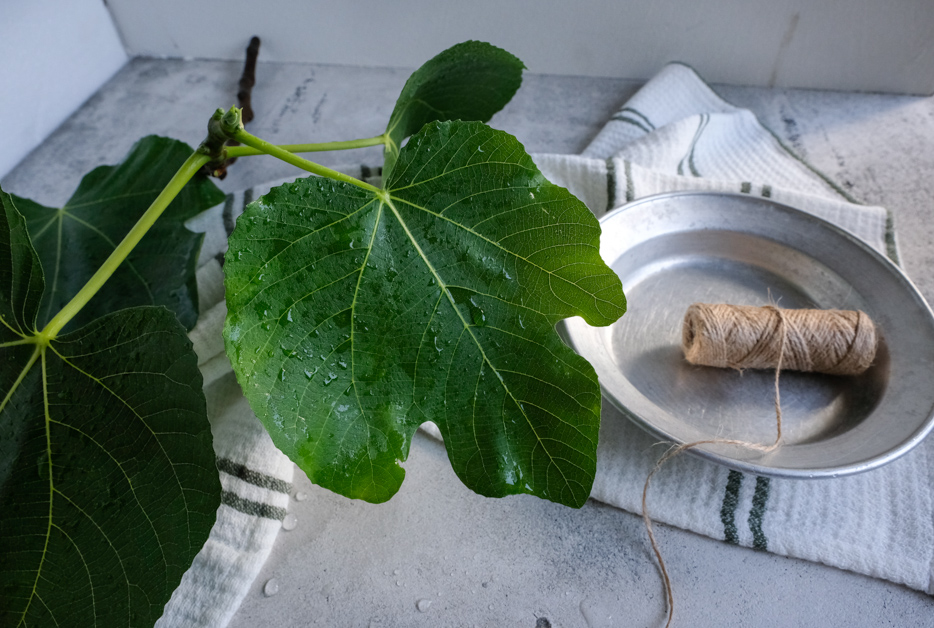
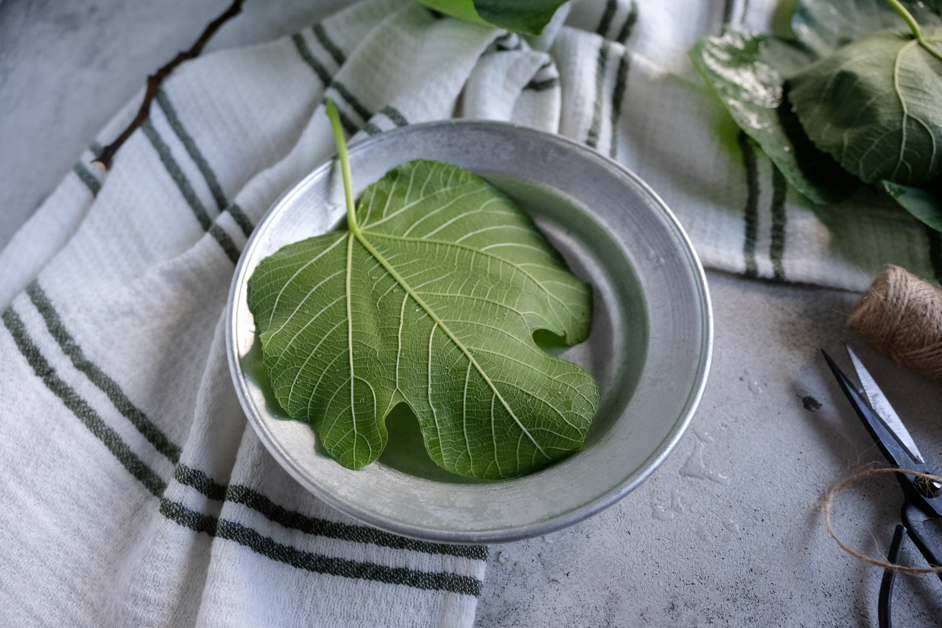
To be honest, the plan was to wrap sardines in vine leaves. I had found wonderful sardines at the local fish shop and after the fishmonger’s prompting, I also bought some super fresh pikes. They really did smell of the sea! I wondered whether I should wrap them in vine leaves as well. My vine leaves were quite tender and a bit small so I started worrying. And that’s when the idea of fig leaves was born!
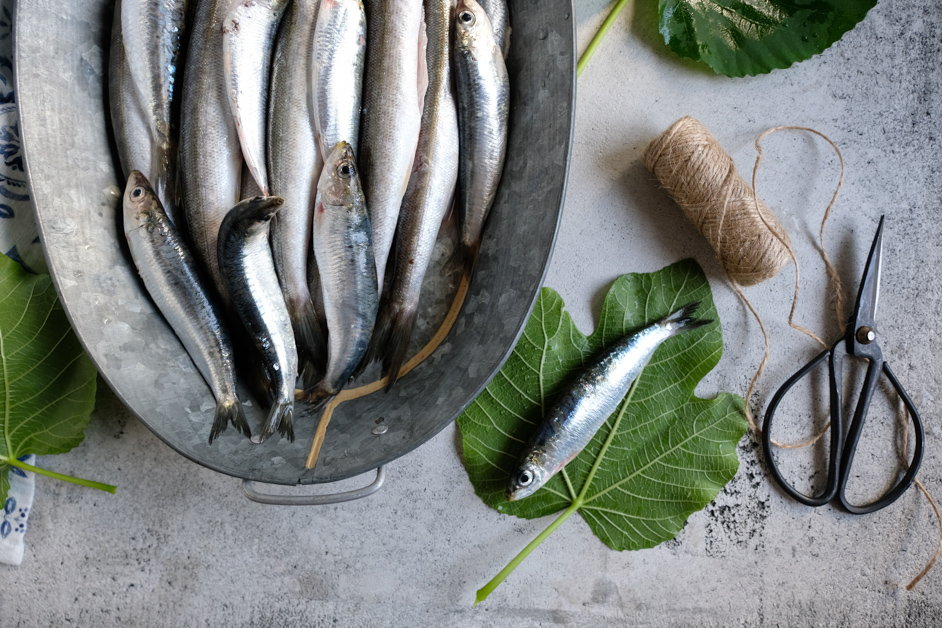
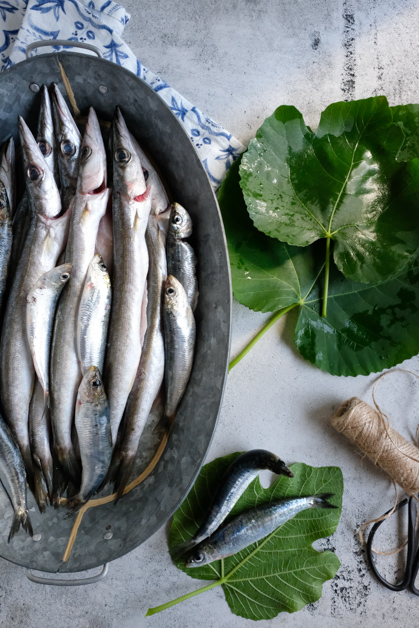
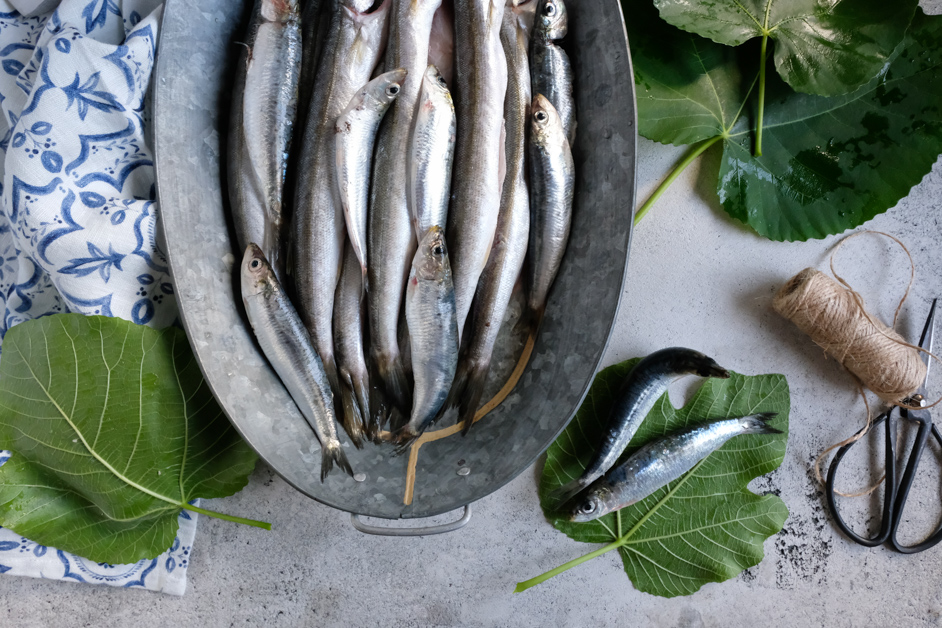
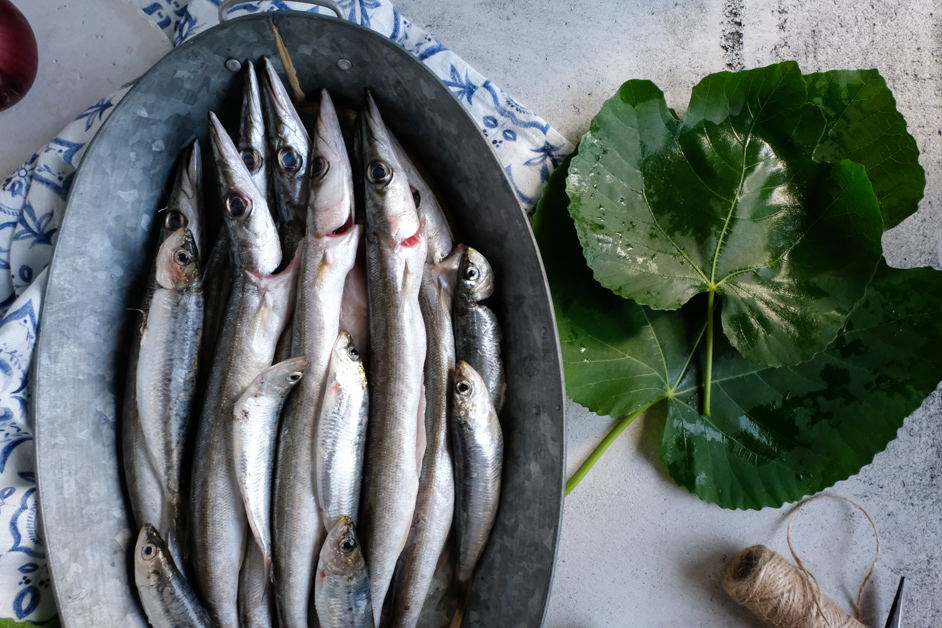
I sat underneath the tree and gazed at its leaves. They were exactly what I needed. Super fresh and tender! I love fig trees. I admire their persistence to grow anywhere, even between building ruins, on a broken rooftop, between rocks. They manage to survive under the most waterless conditions and at the most rugged terrains and maintain their beauty and their wonderful fruits! They’re the trademark of summer and the Mediterranean!
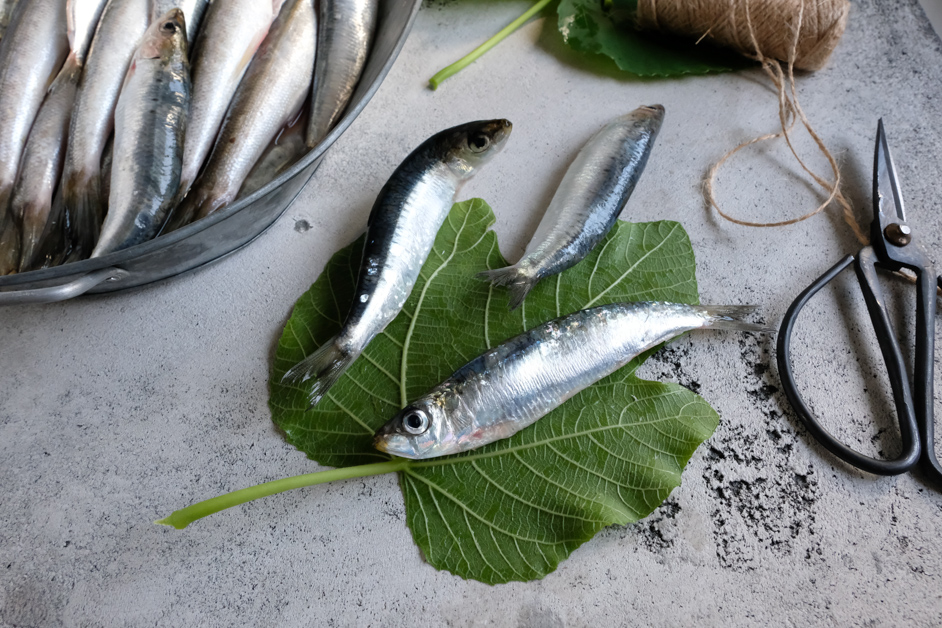
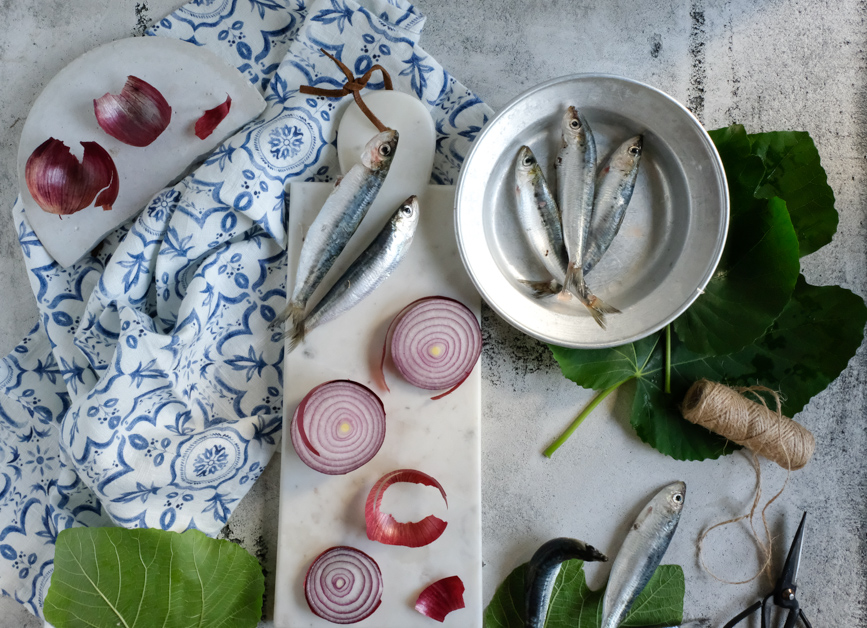
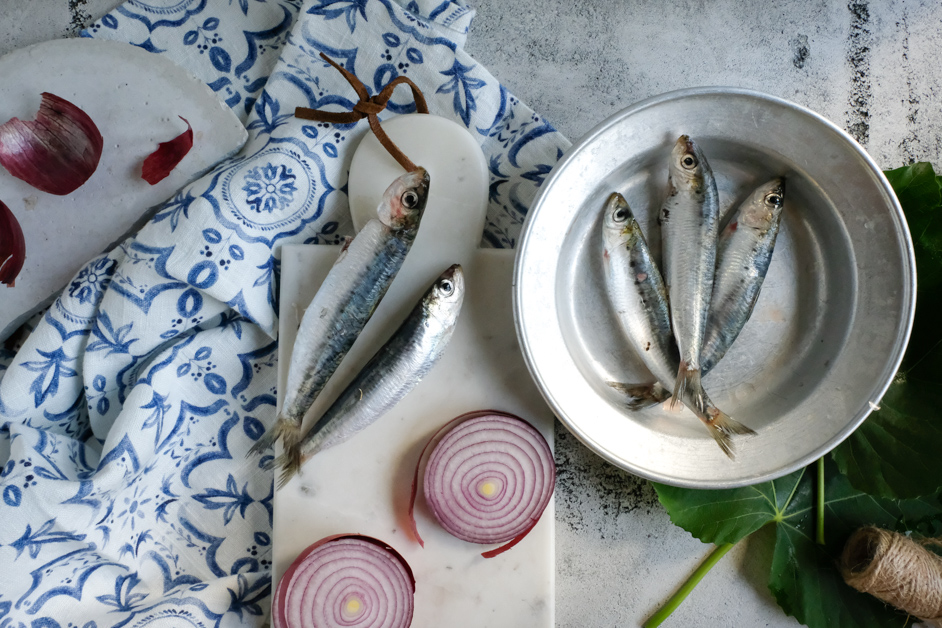
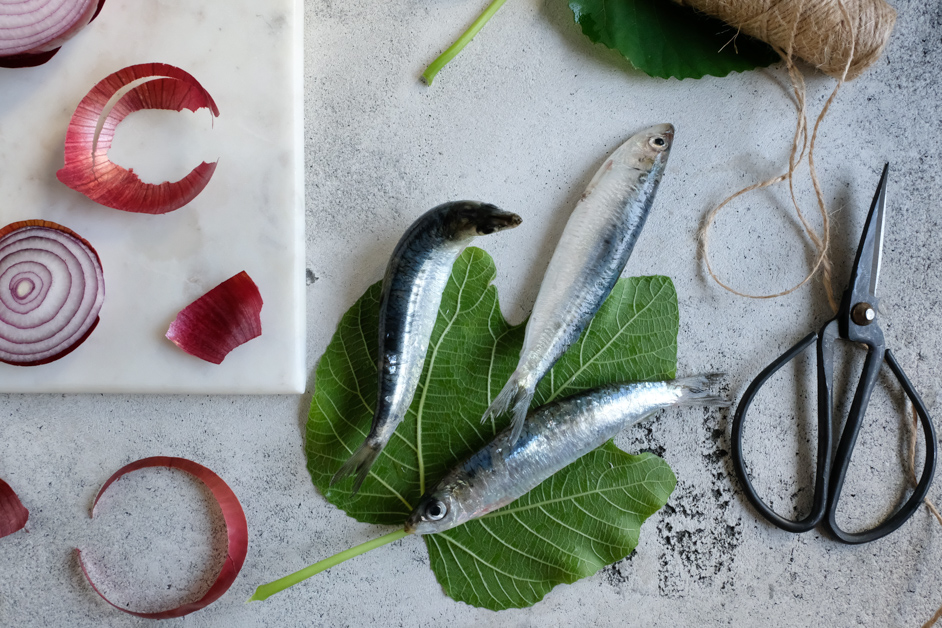
Figs have been widely used since antiquity. Fig leaves were Adam and Eve’s outfit, after all! The fig tree is also known as the tree of fertility and has an important presence in mythology as well. Gods used to offer fig branches and the list of stories and references is long! Their use in food was also considered important as the nutritional and healing properties of the fruit and leaves had been known ever since.
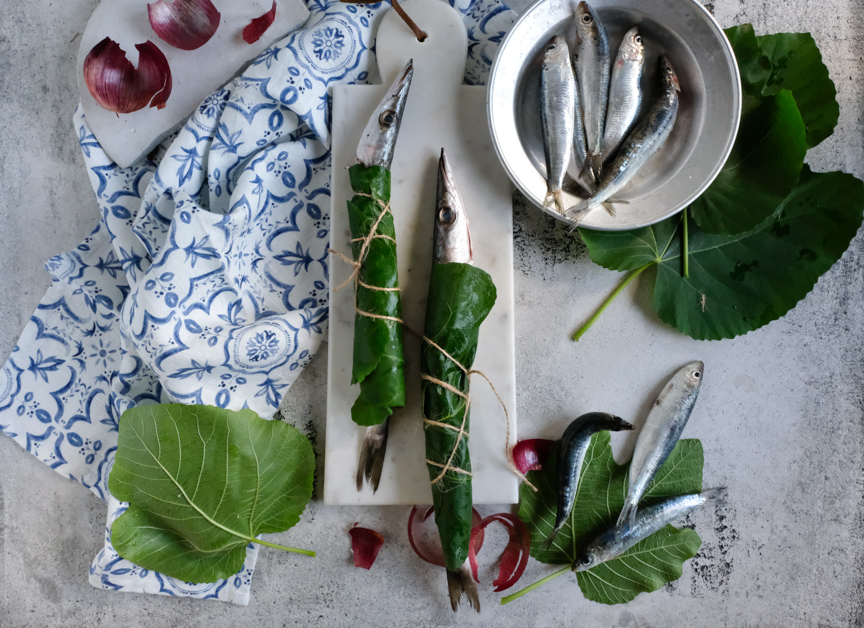
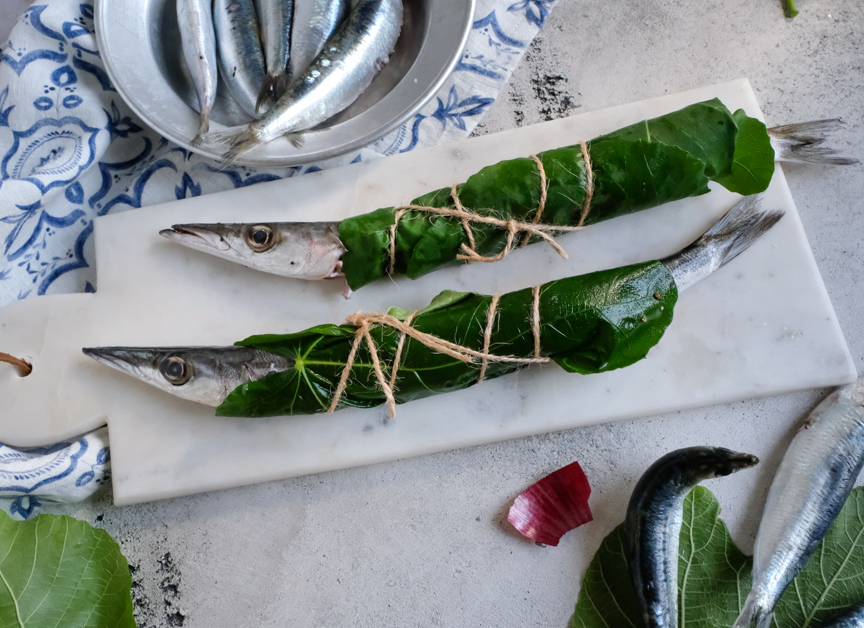
Especially fig leaves –which deserve more recognition- have a long list of beneficial properties to display. Experts believe that they should be incorporated in our daily lives much more. Studies have shown that they help with the treatment of diabetes, cholesterol, hypertension and the prevention of coronary heart disease and cancer while fig leaf poultices are used to heal burns, swelling, inflammation and more health problems.
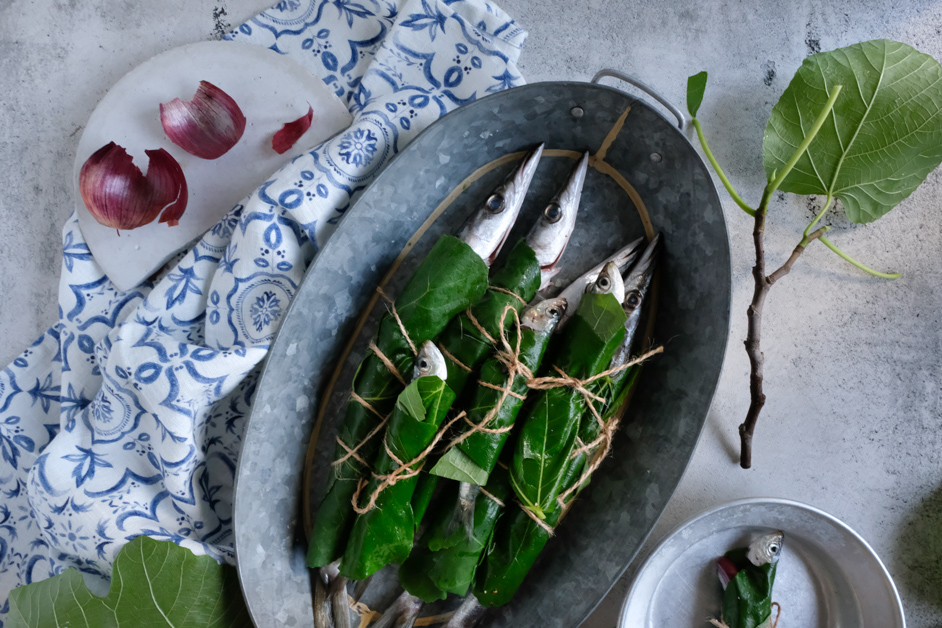
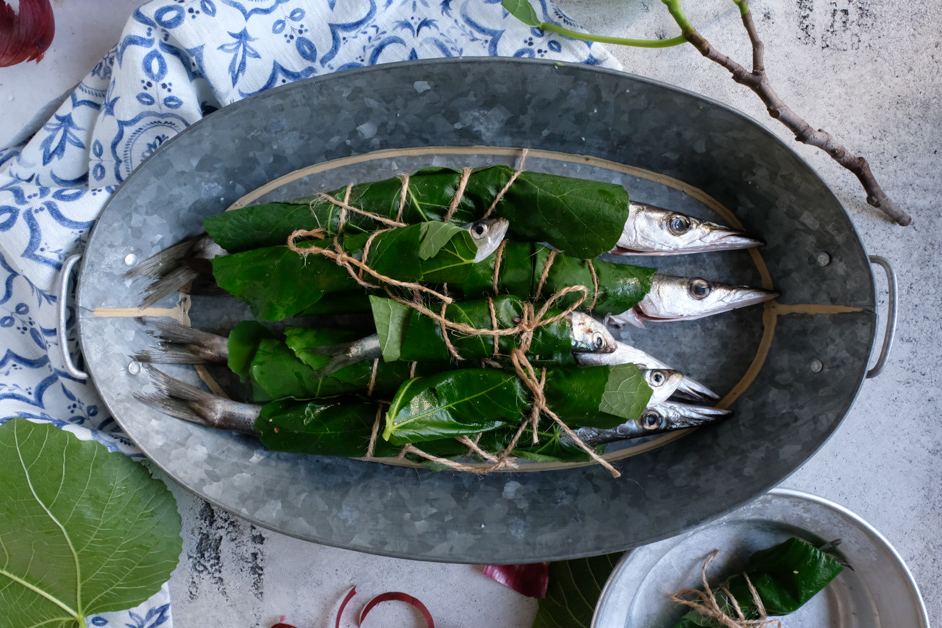
They were widely used in cooking as well. Fig leaves are famous for their emollient properties. Adding tender fig branches in the casserole or cooking meat wrapped in fig leaves was very common. Doing that speeded the cooking process up and helped the meat soften significantly! So they worked as a premature version of a pressure cooker! A while back, in an island, I remember seeing the locals preparing a casserole and covering the meat with fig leaves before placing it in the wood stove. Well, now I know why!
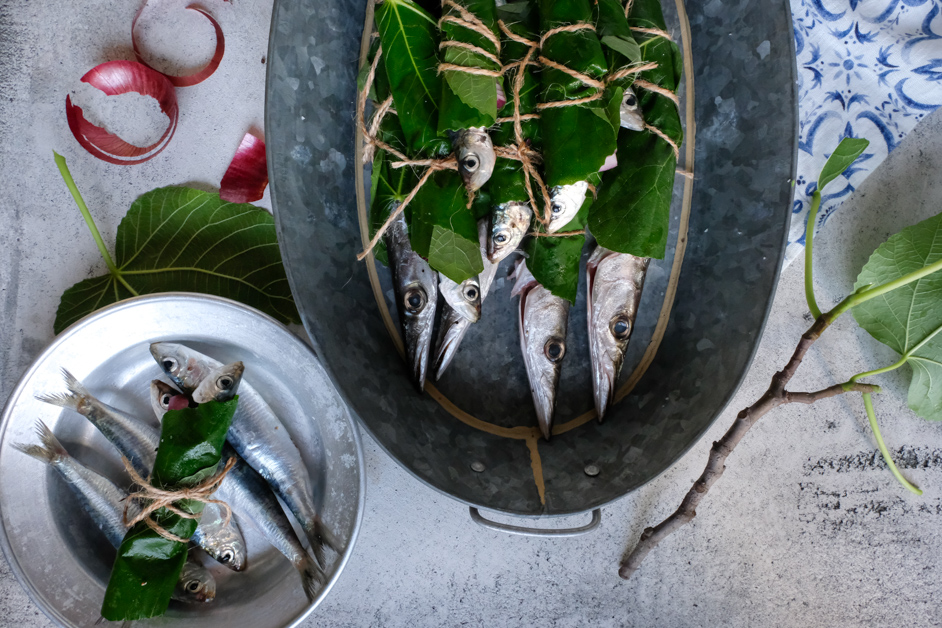
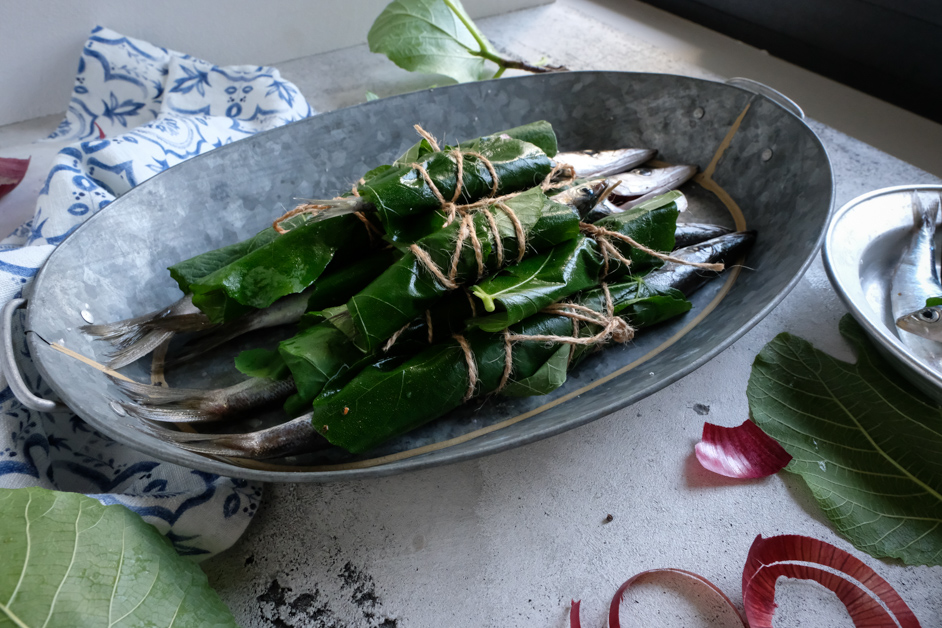
Besides having emollient properties, I thought they must add some extra flavour to the food as well! And they certainly do! I really felt that when I tried my fish, which were absolutely delicious by the way. They were marinated, absorbed the scent of onions and were wrapped in beautiful, green leaves. They looked impressive! The leaves added an exotic scent and aftertaste to the fish and although I can’t really describe how, the dish became much more interesting! I also found the fish more properly cooked. They’re quite small –especially sardines- and tend to be overcooked and quite dry. The leaves helped prevent that, so they were more evenly cooked and much juicier! Sardines are an all-time favourite and seasonless dish but now that warmer, summer days are fast approaching, we seem to crave them even more. Pikes were definitely a surprise. I’m not sure if wrapping pikes in fig leaves has been done before but they were truly delicious and definitely worth a try! Lastly, a small but important detail; don’t consume the leaves after cooking. Unwrap the fish and throw them away!
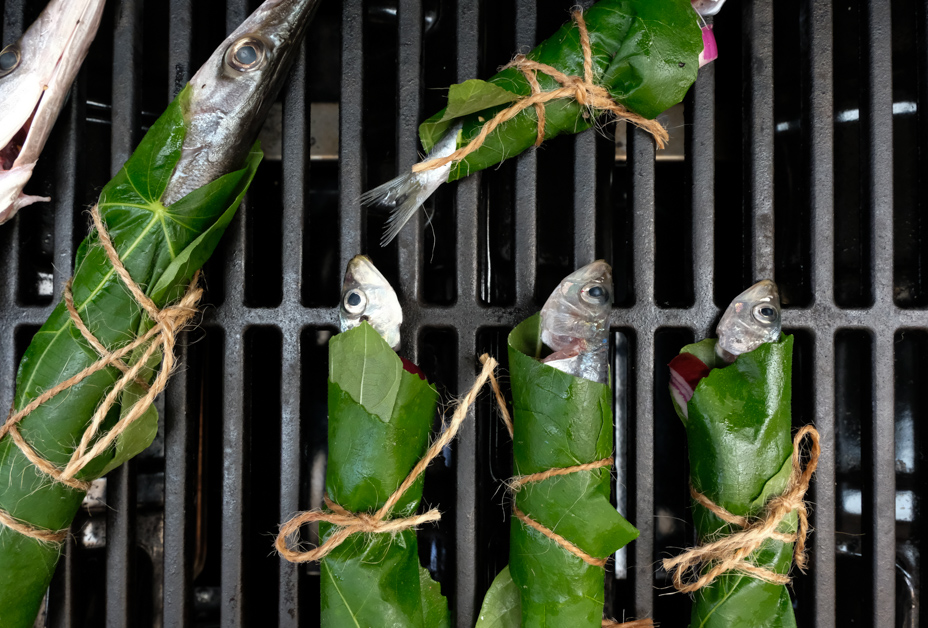
Ingredients
½ kg sardines, slightly bigger so that you can grill them, cleaned
6 pikes, cleaned
Tender fig leaves, 6 for the pikes and half a leaf for each sardine
2 onions cut in slices
Salt, pepper
Olive oil (as much as necessary)
Cooking rope
Juice from 2 lemons
Method
1. Ask your fishmonger to clean and prepare the fishes for grilling. Some choose to also remove the back bone from the sardines.
2. Season the fish with salt and pepper and spread some olive oil on them. If your fig leaves are very tender, you don’t need to boil them. They’ll maintain their wonderful green colour for a while. Place each fish separately on a leaf. Place an onion slice on top of it. Wrap it like a crêpe and tie with cooking rope. Spread some olive oil externally.
3. Grill them on both sides until golden. Pikes need a little extra time.
4. Prepare a dressing with oil and lemon. Serve your fishes on a platter and spread some of the dressing on top of them.

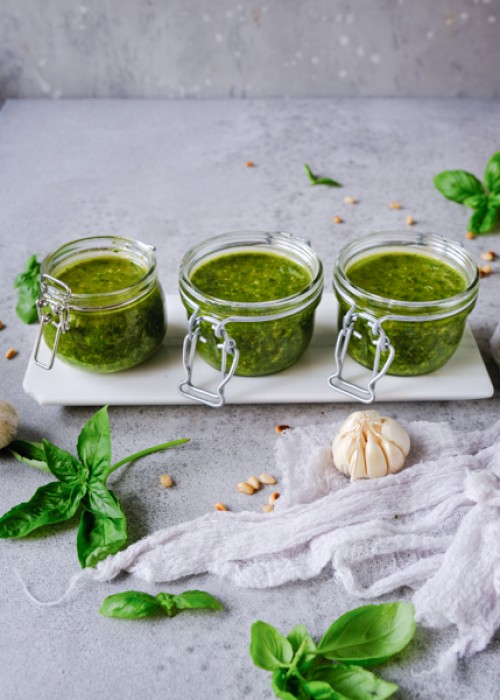
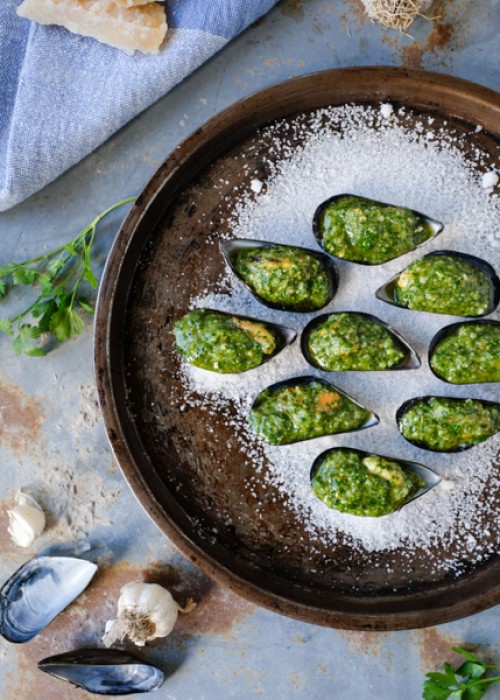
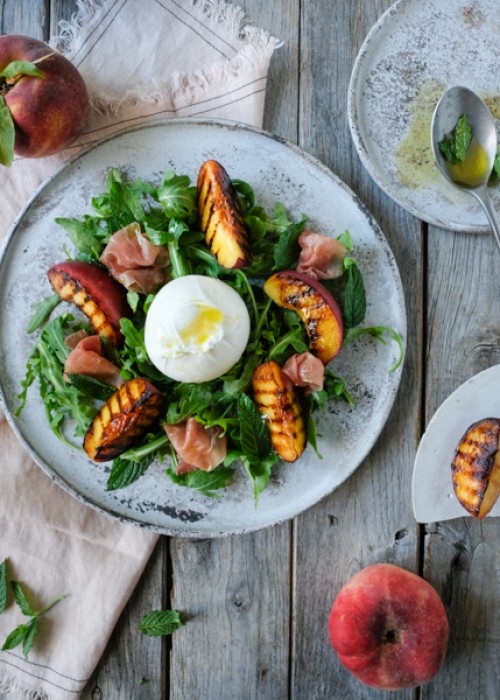
Comments